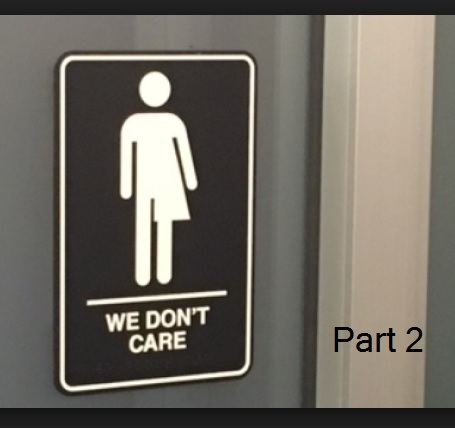Last week, we discussed the employer’s legal obligations after an employee notifies them that they’re planning to transition from their current gender to the other. This is a slow, sensitive process, taking about 2 years. I advised the employer to be legally conservative and treat the transitioning employee as any other protected class like age, religion, or nationality.
This week I want to delve deeper into a couple of guides available online, (“gender transition plans” and gender transition guidelines) describing how best to navigate the transition process.
The guides cover issues like what to tell employees, how to adjust your dress code, when to make name changes on official company documents, and the most sensitive of all: the right timing to begin use of the new gender restroom.
So, should you change your dress code? – Probably. Chances are you are using gender-stereotype language such as “men must wear dress trousers and women must wear skirts”. Instead you can be gender-neutral and require “attire be professionally appropriate to the office” (or unit or situation). Consider adding something saying workers may dress in accordance with their full-time gender expression.
When is the right time to change the person’s name on organization documents and to communicate with client and customers? The Society for Human Resources Management advises:
“Until a transgender person begins working in their new gender role, the person should be considered a member of their original sex and should be treated the same as other members of that sex. Once the employee begins to present themselves in the new gender role at work, the employee should be considered and treated as a member of the new sex. This approach follows the growing legal trend toward recognizing that a transgender person should be treated as a legal member of the gender in which he or she lives life.”
This same rationale should be used when considering when the employee should start using the new gender restroom.
So, what can be done to respond to employee concerns about sharing restrooms?
First, small changes such as adding curtains, flaps, or stalls in restrooms or locker rooms can increase privacy and ease the minds of all employees, transgender or otherwise. Next, listen to the concerns. Acknowledge them; but refocus to the issue of access and fairness, remind them about shared values. –
For more tips on how to respond and free sample restroom policy http://bit.ly/2Djyx9f
*There are guides and templates available online from reputable organizations for workplace “gender transition plans” and gender transition guidelines.
©Copyright Eva Del Rio
Eva Del Rio is creator of HR Box™ – tools for small businesses and startups. Send questions to Eva@evadelrio.com



